Ian Thompson stared at his destroyed bicycle and contemplated his luck. It was a balmy day in 2009, and Thompson could not determine whether the broken bike constituted good, or bad, fortune.
On one hand, Thompson’s situation was unquestionably unlucky. The bike’s seatpost had sheared clean in half just above the clamp, making the bike impossible to ride. Here he was, stranded on the side of the road, miles from his home.
On the other hand, Thompson saw a glimmer of good fortune in the part’s failure. The twisted metal seatpost formed a jagged, knife-like protrusion from the frame. Had Thompson’s weight come down on the post, he would have suffered a terrible injury.
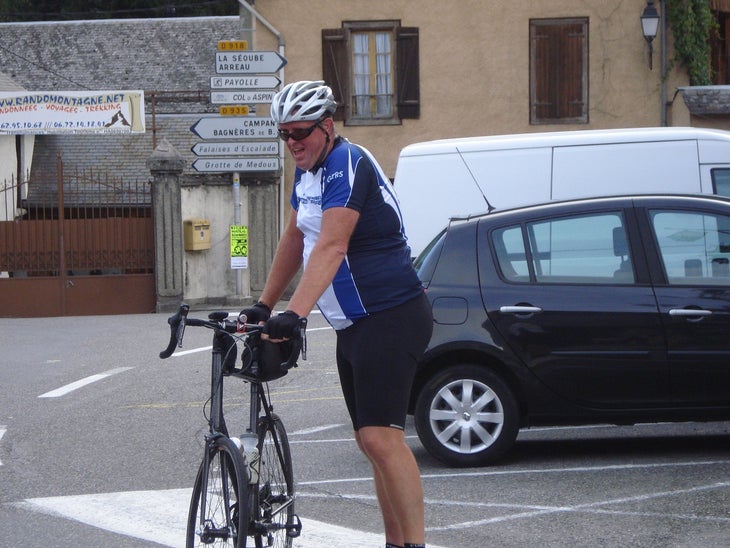
“It was jagged and right by my femoral artery,” Thompson said. “You fall off, and if you’re not killed by a car, you can see how easy it would be to stab yourself on that post and bleed out.”
Thompson did not know it at the time, but this frustrating scene on the side of the road marked the beginning of a years-long project that would ultimately create an extremely robust road bicycle, built specifically to withstand the forces generated by heavy riders. Thompson is a former elite rugby player who has battled his weight throughout his entire adult life. He stands 6 foot 7 ” tall. At the time of the accident, Thompson weighed nearly 350 pounds.
In the months after the accident, Thompson embarked on a frustrating online search for a bicycle built for heavy riders. He sought a high-end road bike that could withstand his bodyweight, and still allow him to pedal great distances over hilly and mountainous terrain. What Thompson found were heavy riders like him, who gathered on online forums to complain about the lack of such a bicycle.
“I found a sea of individuals all having the same problem,” Thompson said. “They were saying, ‘I used to be an athlete and now I’m way overweight. I want to start riding but I can’t find a bicycle that’s right for me.’”
‘All roads pointed to Lennard’
Thompson developed a quick love for cycling after he took up the sport in his early 50’s. He had retired from his longtime career as a mechanical engineer and sought an activity to help him lose weight. At his peak, Thomson weighed over 400 pounds.
Like many entry-level cyclists, Thompson balked at purchasing a traditional road bike, and instead started cycling on a flat-bar mountain bike. A shop in Melbourne, Australia sold him two models of the Kona Hoss, an aluminum hardtail designed specifically for durability.
“I went on epic rides around Sydney and more or less fell in love with cycling straight away,” Thompson said. “The pounds just fell off of me.”
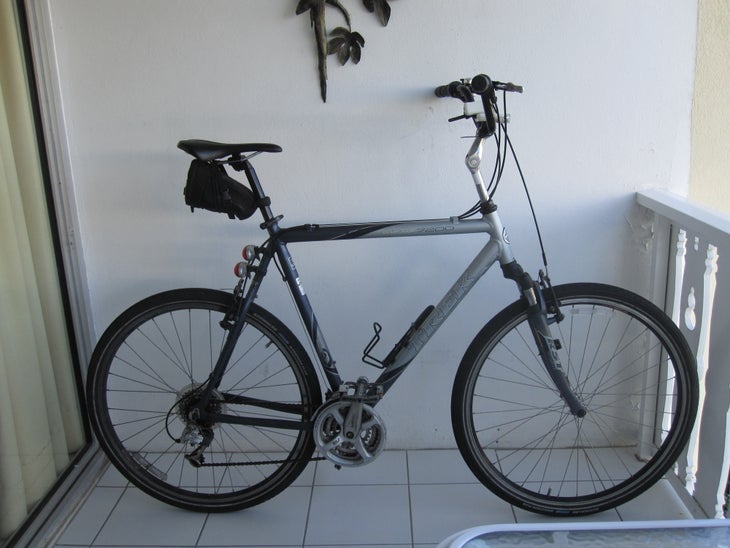
After several months of riding Thompson was ready to graduate to a traditional road bicycle. That’s when his frustration started. Several companies produce bikes for heavyset riders: there are recumbent bikes, flat-bar cruisers, and mountain bikes all made to support rides above 300 pounds. The company Zizebikes, for example, uses aircraft-grade steel tubing to produces a vast array of commuter rigs, e-bikes, and personal mobility tricycles for riders upwards of 550 pounds in weight. And Diamondback’s Haanjo 3 model purports to work with riders up to 300 pounds.
But none of these bikes fall into the category of high-performance road bicycles, and that’s exactly what Thompson sought. His passion for riding helped him drop pounds—it also stoked his desire to ride in the Pyrenees and participate in gran fondo events.
“I couldn’t find a bike that was designed for me,” Thompson said. “I was astonished that nobody in the bike world had discovered this market.”
Perhaps that’s because riders like Thompson fall outside of the normal weight tolerances for high-end road bikes. The 2019 owner’s manual for Trek bicycles places the weight limit at 275 pounds (rider + bicycle weight) for drop-bar road bikes and triathlon bikes. The Specialized owner’s manual lists 100 kilograms (220 pounds) as the recommended weight limit for its high-end performance bikes, however weight limits between 240 and 300 pounds are given for specific bike models in an appendix found on the company’s website.
Thompson saw, firsthand, the reason for these weight limits in his early rides on road bikes. Bike frames creaked under his 300-pound body. His weight put extreme forces on componentry, and he frequently tore spoke nipples from aluminum wheels, or bent the rims entirely. Plus, the power he generated from his muscular legs did additional damage. Thompson shredded bottom brackets and snapped chains like they were dental floss. Hubs flexed and creaked as he pushed his way up steep hills.
As a retiree, Thompson had plenty of time to ride. He often rode more hours during a typical week than an elite racer.
“You realize the [bicycle] industry is putting max rider loads of 100 kilograms (220 pounds),” Thompson said. “I’m doing 30 hours a week and I’m pushing out 400 watts or more, and all of a sudden you realize these bikes are designed to ensure failure.”
Thompson spent several hours online researching custom-build bicycles, and quickly came across longtime VeloNews tech writer Lennard Zinn. For decades Zinn has built custom bicycles for tall and heavy riders, including multiple retired NBA players. In 2010, the two connected on emails, and Zinn agreed to build Thompson a bicycle.
“All roads pointed to Lennard Zinn,” Thompson said.
To achieve the extremely low gear ratios that Thompson wanted, Zinn had to use a mix of road and mountain bike shifters and derailleurs. The setup wasn’t ideal, and Thompson broke the rear wheel within an hour, jammed and broke chains, and quickly destroyed the drive components.
“He was very frustrated with that bike and demanded his money back—he saw the bike as one big thing that didn’t work,” Zinn said. “I didn’t give him his money back. I told him the bike is fine, we just have this kludgy drivetrain setup, and if we could get past that I think he’d have a good experience.”
Zinn worked with Thompson to gradually increase his lowest gear as he built fitness, allowing straight road triple components, and eventually built a new bicycle for him with a compact double crankset and larger cogs in the rear. He experimented with different heavy wheelsets and hub configurations to work with Thompson’s weight.
Thompson, meanwhile, began to ride more. He signed up for gran fondos and multi-day tours through the Alps and Pyrenees and began to put thousands of miles on his Zinn frames. Subsequent bikes built by Zinn fared better than the original bike, however parts continued to fail.
“He’d shear off pawls inside of freehubs because the load on the wheel was so great,” Zinn said. “He would break cranks and spokes, rip spoke heads out of hub flanges and spoke nipples out of rims. He’d start up in a low gear and put so much torque and side load into the wheel that the spokes bulged outward until it snagged the rear derailleur and pulled it into the spokes.”
A bike for Clydesdales
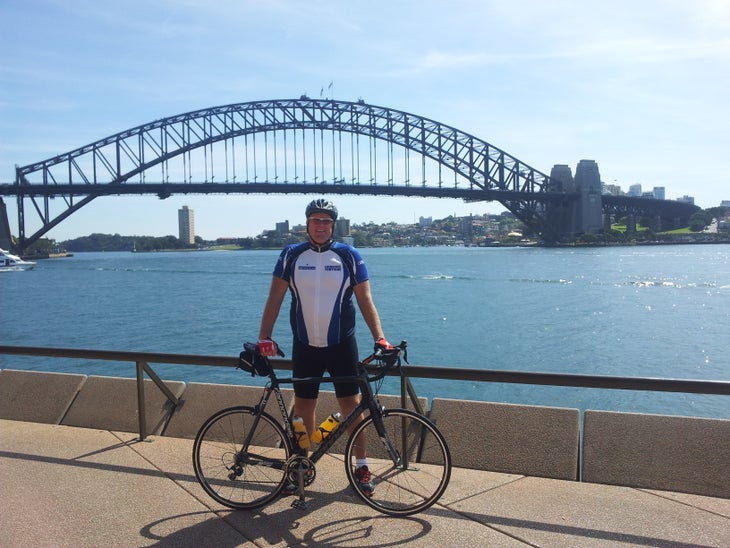
Over the years, Thompson and Zinn became friends; Zinn traveled to Thompson’s home in the UK to examine his bicycles and bring him new gear to try out. Thompson, who had slimmed down to 250 pounds, in turn, either destroyed the products, or gave Zinn the seal of approval. He was an early advocate for disc brakes on the road, even though he sometimes burned through brake pads after a day of riding.
Still, the relative lack of durable high-end road products for heavy riders frustrated Thompson, who frequently vented to Zinn.
“Ian would get angry at the bike industry for not offering stuff that worked for a guy like him,” Zinn said. “He felt like there are a lot of people like him that the industry was ignoring, and he has written a lot of letters to the big component companies complaining about it.”
In 2017, the two came up with an idea. Why not produce a stock bicycle designed specifically for heavier riders like Thompson? After all, Thompson remembered the heavy riders he saw online, all searching for bicycles built to accommodate their body size. Thompson already had a name for the new bicycle line: Clydesdale.
The biggest challenge in creating these bikes was tracking down components, like wheels and brakes that could withstand the extreme forces, as well as super-low gears that shift smoothly. Nick Wigston, sales and marketing manager for Zinn Cycles, said he searched far and wide in the bike industry to source the parts. Since most high-end cycling componentry is aimed at racers, he would need to seek out products that were both lightweight, but also designed to survive a great deal of punishment.
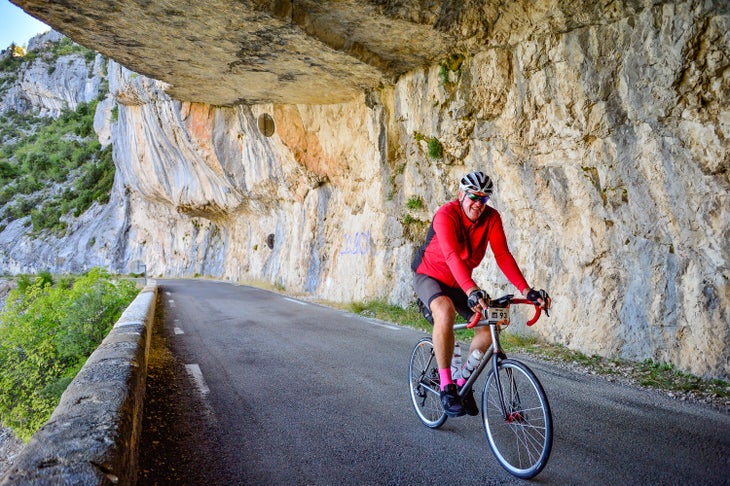
“We knew we couldn’t use a standard freehub with pawls because Ian broke so many of them,” Wigston said. “We use hubs with a roller clutch instead. It’s heavier, but they’re stronger under big loads.”
Wigston sought parts from touring bikes, mountain bikes, and even commuter rigs, hoping that these parts would withstand Thomson’s riding style. He sacrificed weight for durability.
The Clydesdale line of bikes would feature Shimano 105 shifters and brakes, Clydesdale-branded hubs built with more robust freehubs and flanges, and Velocity Dyad touring rims. They used Thomson seatposts and carbon-fiber forks made by Enve with ultra-long 400-millimeter steerer tubes. They ordered custom-built extra-wide drop handlebars from Taiwan.
The bike was made with Thompson’s input, and meeting his demands presented a challenge.
“Ian is very particular. Everything has to be exactly right,” Wigston said. “Sometimes that can be frustrating, but it taught me to be more attentive to detail.”
A Titanium solution
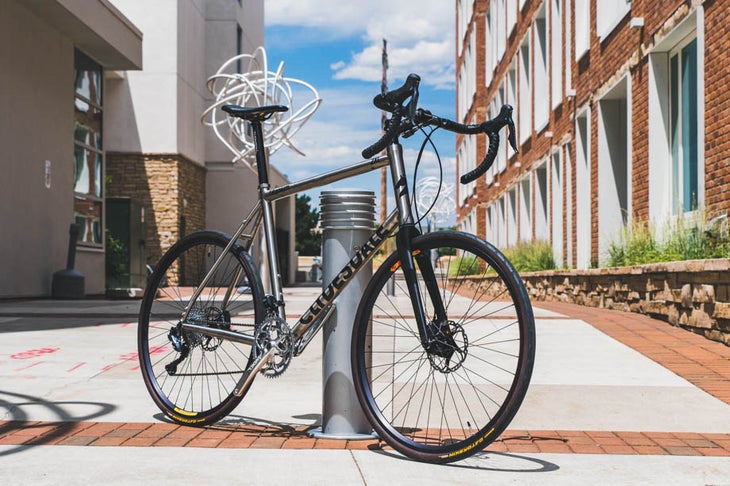
Sourcing the right parts for the bicycles took plenty of trial-and-error. But Zinn knew right away how to build the frames for the robust bicycles. He ruled out carbon-fiber and aluminum for various reasons and chose titanium as the material of choice.
Titanium has high tensile strength, similar to steel, making it extremely difficult to break. But unlike steel, titanium has another feature that made it the ideal material to build robust frames: a mechanical quality called ‘elongation.’
“If it gets in a crash, it will flex much further and then return to its original shape,” Zinn said, “while a steel bike will get dents and wrinkles in a crash that would break an aluminum or carbon frame.”
Titanium tubes also come in a variety of diameters and wall thicknesses, which allowed manufacturers to use large tubes, made very thin, to boost strength and stiffness and eliminate weight. And since the bicycles would already feature heavy-duty wheels and components, shaving some weight from the frame seemed like a good idea.
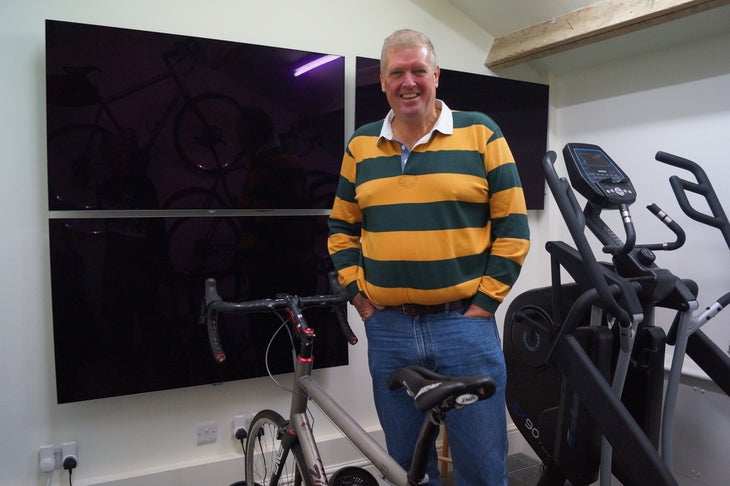
Zinn and Thompson rolled out their first Clydesdale bicycle in 2018, and they immediately started rolling out the door. For a tall, heavy rider, they slot into a price and performance niche between the steel, $2,000 Zinn-designed KHS Flite 747 for big and tall riders and Zinn’s custom bikes.
By focusing on durability, rather than weight, the bikes have robust tubes, strong wheels, and large, tough tires. Sure, the bicycles weight more than a traditional racing road bike—a 2XL (65cm) model tips the scales at 25 pounds. But Thompson is adamant that the bike industry’s focus on weight over other characteristics is misguided.
“If you weigh 165 kilos (364 pounds), then 1 kilo of bike weight is a rounding error,” Thompson said. “Optimizing for weight for average riders is a waste of time, and for heavy riders it is utterly ridiculous. We need to optimize for longevity, for safety, and for weight as a distant third.”
Thompson continues to ride, and each year logs thousands of miles on his road bikes, often pedaling through the Pyrenees and Alps. In June he completed a four-week ride through the Dolomites and Italian and French Alps. He logged more than 100 miles per day. He has also slimmed down, and today weights 250 pounds.
Thompson’s work with Zinn has produced the bicycle that both men believe can help heavyset riders who want to ride on high-end bicycles. Recently, the Clydesdale line has released gravel and mountain bikes, as well as an e-bike and commuter model.
“Big riders who have never been able to find a bike that will fit or hold up for them, or that won’t have front end shimmy, really appreciate them,” Zinn said.
The project, Zinn said, opened his eyes up to a group of riders who felt that the cycling industry had simply ignored their needs. And if the robust bike can help more riders enjoy cycling, then the project, Zinn said, has been a success.
“I have a lot of empathy for these people—with my height alone I know how much gravity works on me, and how much trouble I have with my joints,” Zinn said. “I just wanted to provide a solution that allowed them to have the lifestyle they want, and to be healthier, and I felt like it was something we could give them.”
